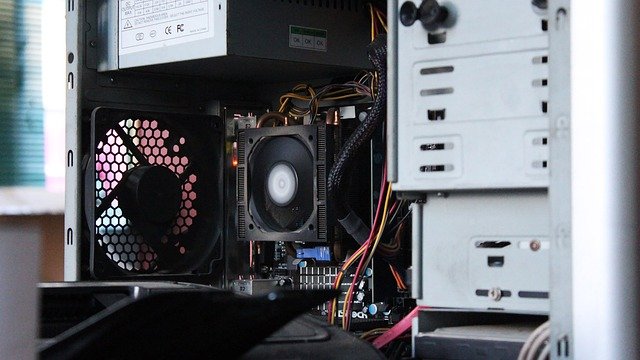Power supply and cable management best practices for compact rigs
Compact desktop builds pack powerful graphics and CPUs into smaller cases, which makes power delivery and neat cable routing critical for reliable performance. This article outlines practical power supply selection, connector planning, and cable-management techniques tailored to tight layouts, helping preserve airflow, cooling efficiency, and upgrade flexibility while keeping noise and latency risks low.

Desktop layout and compact build choices
Choosing the right compact case and laying out components deliberately is the first step toward effective cable management and stable power delivery. Measure allowable PSU depth, GPU clearance, and drive cage positions before buying parts. A small form-factor desktop build often requires SFX or low-profile PSUs, shorter PCle cables, and consideration of where SSDs and memory modules will sit to avoid blocking airflow. Early planning reduces cable congestion and keeps access to connectors straightforward for future upgrades.
Power selection and considerations for compact rigs
Selecting a power unit involves more than wattage. Look for efficiency ratings (80 Plus), stable rail design, and the correct connectors for your graphics and storage devices. In compact rigs, an SFX PSU can save space but confirm available headroom for overclocking or adding a higher-power graphics card. Account for peak power draw during benchmarks or VR sessions; margin of 20–30% above typical load helps maintain voltage stability and reduces fan noise under transient loads.
Cable routing to improve airflow and cooling
Cable routing directly affects airflow and temperatures. Route power cables behind the motherboard tray where possible, use the case’s built-in channels and tie-down points, and keep the area in front of intake fans clear. Short, well-bundled cables reduce turbulence and help fans establish a steady airflow path over storage, memory, and the GPU. Consider using flat or low-profile extension cables that lie flush and minimize obstruction to air moving from front intakes to rear/top exhausts.
GPU, CPU, and overclocking impact on power and heat
Graphics cards and CPUs are the primary heat and power sources in a compact rig. When overclocking, monitor how voltage increases affect the PSU and case thermals: higher clocks raise power draw and heat, which can strain compact cooling solutions. Ensure the PSU can provide clean, continuous current for the GPU and CPU under load. Place temperature sensors or use software to track CPU and GPU temps during stress tests and benchmarks to confirm that cable placement isn’t trapping heat around these components.
Storage, memory, SSD upgrades and performance benchmarks
Storage and memory choices affect both performance and internal layout. NVMe SSDs mounted on the motherboard minimize cabling but can run hotter near the CPU; ensure airflow and heatsinks are adequate to avoid thermal throttling that can affect latency in VR and other real-time applications. When planning upgrades—additional SSDs, larger memory kits, or an upgraded graphics card—reserve cable paths and PSU connectors. Use benchmark runs to validate that new components don’t introduce unexpected power spikes or thermal bottlenecks.
Airflow, connectors, and practical cable-management tips
Optimize airflow by establishing a consistent intake-to-exhaust path and placing cables to support that flow. Use modular PSUs to eliminate unused cables, and label or color-code connectors for easier future work. Secure cables with reusable ties and route them through dedicated cutouts to keep the primary airflow channel unobstructed. In very tight cases, consider right-angle SATA or PCIe adapters to reduce cable bend radius and risk of connector strain. Keep a small toolkit and spare cable ties for periodic maintenance.
Conclusion
Compact rigs demand careful coordination between power selection and cable management to preserve cooling efficiency, maintain stable voltages, and allow for upgrades. Prioritize a right-sized PSU with headroom, plan cable paths before assembly, and validate thermal and power behavior with benchmarks after the build. Thoughtful routing and modular components help reduce noise, lower latency risks in VR and real-time tasks, and extend the useful life of a compact desktop setup.






